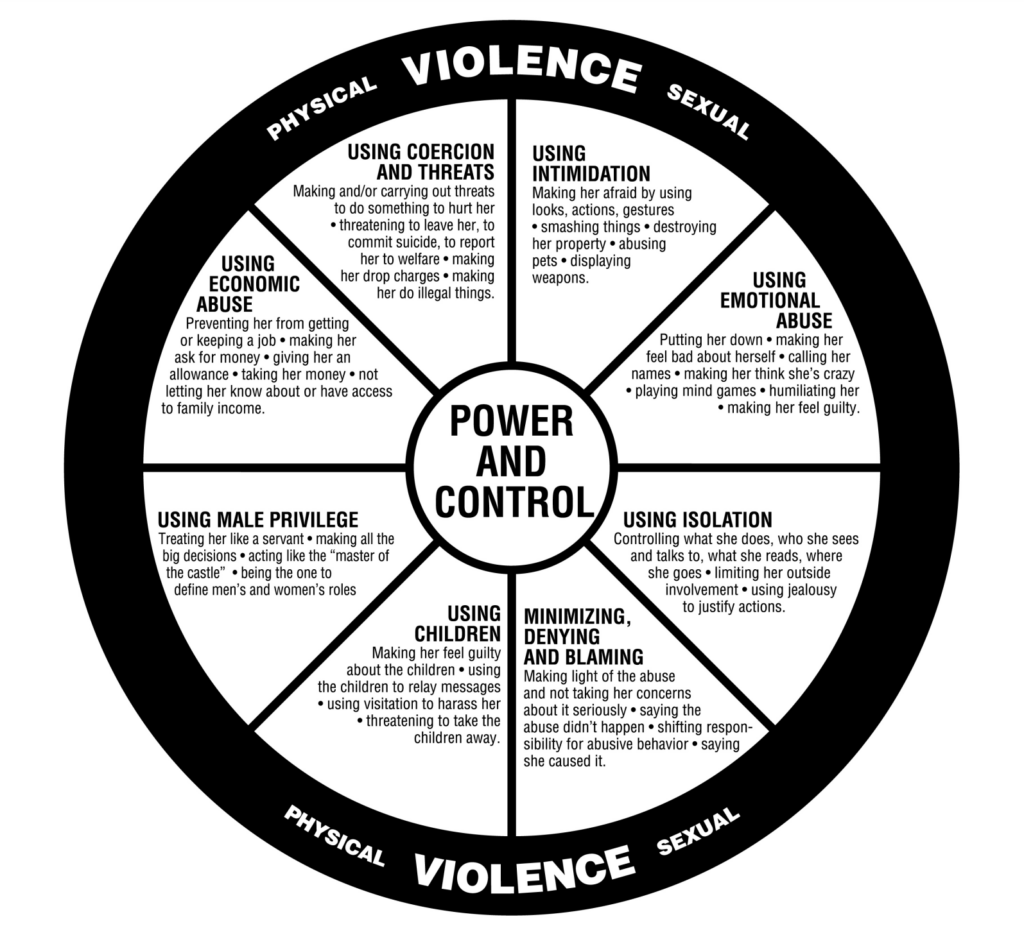[CW: intimate partner (IPV) and domestic violence (DV), abuse, suicide]
When speaking on abuse, the perpetrators of violence and harm are the ones responsible for their actions — NEVER the victims. If you find yourself relating to certain aspects of this piece and think you or someone you love are a victim of domestic violence and/or abuse, please know that it is not your fault.
The purpose of this piece is to share information on how one’s upbringing influences their attachment style, and how that attachment style can make an individual susceptible to domestic violence. The information in this post is shared in order to raise awareness of how perpetrators of violence can use certain qualities in other people to manipulate and control them, and to show why it is so difficult for victims to leave abusive partners. Resources and help for victims of domestic violence are listed at the end of this piece.
Abuse Is Abuse
When most people hear the term domestic violence, their mind jumps to physical abuse. However, abuse is not just physical. Psychological and emotional abuse can leave a victim traumatized for years if untreated. Trauma from psychological, emotional, and physical abuse manifests in individuals as depression, anxiety, post-traumatic stress disorder, addictions, and much more.
Psychological and emotional abuse is often unseen by individuals outside of a relationship. However, these types of abuse can cause more long-lasting effects for the victim, as we see with intergenerational trauma. Psychological and emotional abuse can take the form of an abuser using threats, finances, emotional instability, and more to control and isolate their partners. Abusers aim to isolate their victims in order to maintain their control over the victim and their relationship.
An individual’s attachment style can be indicative of their susceptibility to victimization in an abusive relationship. It is important to understand what your attachment style is (secure, anxious, or avoidant) in order to develop healthy communication skills and constructive conflict resolution strategies, and to build secure attachments in your adult relationships. This understanding can also help you spot red flags in other people.
You can learn more about attachment styles and their definitions in this post by Yasi.
A Quick Recap of the Attachment Styles
What Is Attachment Theory?
In a nutshell, attachment theory explains how an individual’s primary caregiver-child relationship experience helps mold their internal working models. This relationship then becomes projected onto the individual’s romantic relationships as an adult. For example, if you had a caregiver who was unable to meet your emotional and physical needs growing up, you are more likely to form an insecure attachment style.
Secure Attachment
Securely attached individuals had caregivers who were emotionally available, attentive, and responsive. This attachment style carries over into adulthood as an individual who can easily trust their partner, is comfortable with intimacy, and has healthy, constructive conflict resolution skills.
Insecure Attachments (Anxious and Avoidant)
Those who are avoidant or anxious, who have insecure attachment styles, likely had emotionally unavailable caregivers. These caregivers could have suffered from depression, anxiety, or another form of psychopathological disorder. Their caregivers were likely unresponsive and inattentive to their dependent’s emotional and/or physical needs. This type of parental behavior could have led the child to believe that their caregiver’s responsiveness was inconsistent and unpredictable. Additionally, individuals who have insecure attachments may have experienced various forms of abuse in early relationships that are then projected onto their future, romantic relationships, reinforcing their victimization.
Anxious Attachment
Anxiously attached individuals obsess over their relationships and seek reciprocity and closeness.
Avoidant Attachment
Avoidantly attached individuals fear intimacy and closeness, avoid relationships, suppress emotions, and default to accommodating behaviors during a conflict.
How to Go from an Insecure to a Secure Attachment Style
It takes a lot of self-reflection and work (most often in therapy) to help heal the childhood trauma that causes individuals to become insecurely attached in their life. This internal work and self-reflection are tough to do, but the healing journey to becoming securely attached to yourself and, eventually, to your partner is extremely rewarding (speaking as a former anxiously attached individual).
Attachment styles shed light on how you interact in your adult relationships. Understanding your attachment style and why you have that specific type of attachment can help you navigate your thoughts, feelings, and reactions in your intimate relationships. This knowledge can also help you detect early signs of manipulation and psychological and emotional abuse in order to avoid entering into abusive relationships.
How Does My Attachment Style Impact My Susceptibility to Victimization in an Abusive Relationship?
If an individual has developed an anxious or avoidant attachment style, the insecurity and abuse they have experienced in their earliest relationships can be reinforced by victimization or perpetration of intimate partner violence (IPV) as an adult. Research has demonstrated the importance of the relationship between a child’s caregiver — including the caregiver’s mental, physical, and emotional availability — to the attachment style that an individual develops. This relationship is important because the learned behaviors and expectations can be projected onto the individual’s romantic/intimate relationships in adulthood. Most researchers have concluded that individuals with anxious or avoidant attachment styles are more susceptible to either victimization or perpetration of IPV. These conclusions indicate that an individual’s earliest relationship with their main caregiver can impact their susceptibility to becoming a victim of IPV.
Furthermore, studies have examined how different parenting styles and maltreatment impact a child’s self-esteem and a person’s perspective on punitiveness. As previously addressed, authoritarian parenting styles, specifically ones that include corporal punishment, childhood maltreatment, or abuse, can condition children to believe that violence is an acceptable conflict resolution skill. In adulthood, these conditioned beliefs can cause an individual to think that psychological and physical abuse is an appropriate response to conflict in intimate relationships.
So What?
Since we have established that insecure attachment styles can potentially lead an individual to be susceptible to DV and IPV, it is important to understand how a perpetrator may take advantage of, and manipulate, other people. The Duluth Model below describes how perpetrators are able to manipulate, control, and isolate individuals who then become victims of DV and IPV.
The Duluth Model
The Duluth Model approach to domestic violence intervention explicitly depicts the mechanisms by which abusers take control over a victim’s life (see wheel below). Abusers use these strategies to isolate and exert power over their partners. Understanding and recognizing these mechanisms of control allow you to be aware of the toxic and abusive behaviors that abusers possess. The Duluth approach helps shift the societal/cultural blame from the victims of domestic violence (DV) and places accountability on the abusers. This approach also calls on the community (first responders, advocacy teams, and DV shelters) to assist in keeping the victims and their families safe.

Why It’s So Hard to Leave an Abuser
Too many times, we hear people ask, “Why don’t they just leave?” or “Why would they even be with them?” Some may even say, “They’re choosing to stay.” These types of questions and statements are ignorant of the fact that victims in these relationships may believe it is too dangerous to leave. Or, if there are children involved, they may find they can’t leave. Because if they do, who will protect the children? Additionally, abusers often have their victims isolated from their friends and family (as in, the abusers have taken away the computers and phones in the house and/or monitor communication between the victim and their friends and family). Abusers may control the victim’s finances. Situations like these may feel impossible and terrifying for the victim to escape.
To rebut the statement, “they’re choosing to stay,” abusers have victims trapped in the cycle of violence. This cycle starts with some tension build-up where the victim may feel like they are walking on eggshells to keep the abuser calm. Then, the crisis phase sets in and the abuser lashes out with threats, coercion, and/or destruction (among other forms of abuse). After this, the honeymoon phase begins and the abuser apologizes for what they’ve done, makes promises to change, and reverts to the person the victim initially fell in love with. Humans tend to want to believe the best in people and hold out hope for their loved ones to change. This helps explain how and why abusers are able to trap and perpetrate violence on their partners.
On average, victims attempt to leave their abusers 7-12 times before they are able to leave for good. Removing yourself from an abusive relationship can be one of the hardest things you ever have to do. For that reason, it is imperative that victims know what resources are available to them. There are Domestic Violence Shelters, Domestic Violence Advocates, organizations local to your area that are available for transportation services, and hotline numbers that can assist you in leaving an abusive person.
Intimate Partner and Domestic Violence Resources
If you or someone you know may be experiencing abuse (psychological, emotional, or physical), there are national resources below to help. In addition to these resources, please check with your local community and state government websites to see if there are more help options for you.
Phone Numbers
National Domestic Violence Hotline: call 1-800-799-7233 and TTY 1-800-787-3224
Love is Respect National Teen Dating Abuse Helpline: call 1-866-331-9474 and TTY 1-866-331-8453
Rape, Abuse & Incest National Network’s (RAINN) National Sexual Assault Hotline: call 800-656-4673 (you will be connected to a trained staff member/sexual assault service provider in your area)
National Suicide Prevention Lifeline: call 988
If you want to read more:
CDC Intimate Partner Violence explanation and resources
Bender, A. K. (2017). Ethics, methods, and measures in intimate partner violence research: the current state of the field. Violence Against Women.
Do, K. N., Weiss, B., & Pollack, A. (2013). Cultural Beliefs, Intimate Partner Violence and Mental Health Functioning among Vietnamese Women. International perspectives in psychology: research, practice, consultation.
Esquivel-Santovena, E. E., Lambert, T. L., & Hamel, J. (2013). Partner abuse worldwide. Partner Abuse.



avoidant is not an attachment style, by definition it is a detachment disorder. Avoidants behaviors are self serving to isolate, control and manipulate circumstances which is emotionally abusive in a relationship